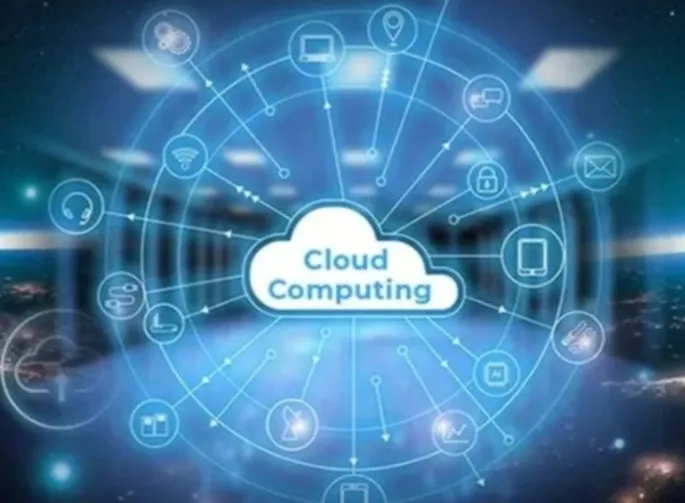In today’s fast-paced technological landscape, the term “cloud computing” is ubiquitous. It’s mentioned in business meetings, technology articles, and even everyday conversations. Yet, for many, its precise definition remains somewhat abstract. Understanding “what is cloud computing?” and having a clear cloud computing definition is fundamental to grasping the significant shift it represents in how we access and utilize technology resources. Cloud computing has revolutionized everything from software development and data storage to artificial intelligence and everyday productivity tools, transforming IT from a capital-intensive, infrastructure-heavy endeavor into an on-demand service. This fundamental change is impacting organizations of all sizes across every industry, enabling greater agility, scalability, and cost efficiency. To truly appreciate its impact and potential, we must first thoroughly define cloud computing, breaking down its core characteristics, exploring the different models it encompasses, and understanding the compelling benefits that drive its widespread adoption. This comprehensive guide aims to provide a clear and detailed cloud computing definition, explaining its meaning, exploring its various facets, and highlighting why understanding this concept is crucial in the modern digital age, providing a comprehensive explanation of “what is cloud computing” and its implications.
Toc
At the Core: Let’s Define Cloud Computing

To begin our exploration, we must establish a clear and robust cloud computing definition. This involves looking beyond simple analogies and understanding the fundamental principles that govern this transformative model of IT resource delivery. Answering “what is cloud computing?” requires breaking down the concept into its essential elements.
The Fundamental Cloud Computing Definition: IT as a Utility
The most widely accepted and fundamental cloud computing definition describes it as the delivery of computing services – including servers, storage, databases, networking, software, analytics, and intelligence – over the Internet (“the cloud”) to offer faster innovation, flexible resources, and economies of scale. In essence, it’s about accessing IT resources as a utility, much like you access electricity or water from a provider. Instead of buying, installing, and maintaining physical hardware and software in your own data center or on your personal computer, you access these capabilities remotely via the internet from a cloud service provider.
This cloud computing definition signifies a move away from the traditional model of IT. In the past, organizations had to make significant upfront investments in hardware, manage complex infrastructure, and anticipate future capacity needs (often leading to over-provisioning or under-provisioning). Cloud computing, as defined by this model, allows users to consume IT resources on demand, paying only for what they use (a pay-as-you-go cloud model). This offers unprecedented flexibility and efficiency. The cloud computing meaning is tied to this utility-like model of service delivery – accessing computing resources not as owned assets, but as services consumed from a shared pool. This is the core idea when seeking to define cloud computing. It fundamentally changes the relationship between users and technology infrastructure, enabling greater agility and reduced operational burden.
Key Characteristics That Define Cloud Computing: Beyond the Basic Explanation

While the utility analogy provides a good starting point, a more detailed cloud computing definition requires exploring the key characteristics that distinguish cloud services from traditional hosting or on-premises IT. These attributes are what truly define cloud computing and its unique capabilities.
The National Institute of Standards and Technology (NIST) outlines five essential characteristics that define cloud computing:
- On-Demand Self-Service: A consumer can unilaterally provision computing capabilities, such as server time and network storage, as needed automatically without requiring human interaction with each service provider. This is the essence of accessing resources instantly.
- Broad Network Access: Capabilities are available over the network and accessed through standard mechanisms that promote use by heterogeneous client platforms (e.g., mobile phones, laptops, tablets, workstations). This global accessibility is fundamental to the cloud computing definition.
- Resource Pooling: The provider’s computing resources are pooled to serve multiple consumers using a multi-tenant model, with different physical and virtual resources dynamically assigned and reassigned according to consumer demand. To the consumer, there is generally no control or knowledge over the exact location of the provided resources but may be able to specify location at a higher level of abstraction (e.g., country, state, or data center)
- Rapid Elasticity: Capabilities can be elastically provisioned and released, in some cases automatically, to scale rapidly outward and inward commensurate with demand. To the consumer, the capabilities available for provisioning often appear to be unlimited and can be appropriated in any quantity at any time. This characteristic is often referred to as elasticity cloud.
- Measured Service: Cloud systems automatically control and optimize resource use by leveraging a metering capability at some level of abstraction appropriate to the type of service (e.g., storage, processing, bandwidth, active user accounts). Resource usage can be monitored, controlled, and reported, providing transparency for both the provider and consumer of the utilized service. This enables the pay-as-you-go cloud model.
These five characteristics are fundamental to a comprehensive cloud computing definition and are what differentiate true cloud services from older models like hosting or colocation. They define cloud computing by its inherent flexibility, scalability, accessibility, and efficiency. When trying to grasp “what is cloud computing?”, these attributes provide the detailed explanation.
Why a Clear Cloud Computing Definition is Essential in the Digital Age

Having a precise cloud computing definition is not merely an academic exercise; it is essential for practical reasons in the digital age. A clear understanding of “what is cloud computing?” empowers individuals and organizations to make informed decisions about adopting and utilizing this technology.
Firstly, a clear cloud computing definition helps in accurately evaluating different service providers and their offerings. Not everything marketed as “cloud” fully adheres to the core characteristics. Understanding the definition allows you to discern true cloud services from traditional hosting solutions, ensuring you are investing in the model that provides the promised benefits like elasticity cloud and on-demand cloud access.
Secondly, a solid cloud computing definition guides strategic IT planning. Knowing what cloud computing fundamentally offers helps organizations determine which workloads are suitable for the cloud, which cloud service models (IaaS, PaaS, SaaS) best fit their needs, and how to manage the transition effectively. It shapes decisions about infrastructure investment, software procurement, and workforce skills development.
Furthermore, understanding the cloud computing definition is crucial for security and compliance. The shared nature and global distribution inherent in the definition introduce unique security considerations (the shared responsibility model). A clear understanding of what the provider manages versus what the user is responsible for is directly derived from the cloud computing definition and is vital for maintaining a secure posture and meeting regulatory requirements. Without a precise cloud computing definition, organizations risk mismanaging expectations, selecting unsuitable solutions, and facing unforeseen security or operational challenges. A clear definition is the necessary foundation for successfully leveraging the power of cloud computing in today’s technology-driven world. It clarifies the cloud computing meaning for all stakeholders.
Breaking Down the Definition: Cloud Service Models and Deployment Options
To further expand upon the cloud computing definition, it’s helpful to break it down into the different ways cloud capabilities are delivered (cloud service models) and the different ways cloud infrastructure can be deployed (cloud deployment models). These models are key components of a comprehensive cloud computing definition.
Understanding Cloud Service Models: IaaS, PaaS, and SaaS as Distinct Definitions
Within the overarching cloud computing definition, three primary cloud service models are most commonly discussed. These models define the level of abstraction provided by the cloud provider and the corresponding level of management responsibility retained by the user. Understanding these cloud service models is crucial to understanding the different types of cloud services available.
-
Infrastructure as a Service (IaaS): The most basic category of cloud computing services. IaaS provides virtualized computing resources over the internet. This is the cloud infrastructure layer.
- Definition: Consumers rent foundational computing resources like virtual machines (servers), storage, and networking from a cloud provider. The provider manages the physical hardware and infrastructure.
- User Responsibility: The user manages the operating system, middleware, applications, and data.
- Example: Renting a virtual server on a provider’s platform and installing your own OS and software.
- Relevance to Definition: This model embodies the utility concept – renting raw IT infrastructure on demand, representing a core cloud computing service.
-
Platform as a Service (PaaS): PaaS builds upon IaaS, providing a platform for building and deploying applications.
- Definition: Consumers rent a platform and environment for developing, running, and managing applications. The provider manages the underlying infrastructure and the platform software (operating systems, middleware, development tools, databases).
- User Responsibility: The user manages their applications and data.
- Example: Using a managed database service or an application runtime environment where you just deploy your code.
- Relevance to Definition: This model provides a higher level of abstraction, enabling faster application development and deployment as a cloud computing service.
-
Software as a Service (SaaS): The highest level of abstraction, providing complete applications.
- Definition: Consumers rent access to complete software applications delivered over the internet on a subscription basis. The provider manages the entire stack – infrastructure, platform, and the application itself
- User Responsibility: The user primarily manages their data and user accounts.
- Example: Using web-based email (like Gmail) or online CRM software.
- Relevance to Definition: This is the most widely consumed cloud computing service, providing ready-to-use cloud applications without any underlying management burden.
Understanding these distinct cloud service models is vital for a complete cloud computing definition as they define the various ways IT capabilities are packaged and delivered as cloud computing services. They provide a framework for understanding the different levels of abstraction and management responsibilities inherent in the cloud computing definition.
Cloud Deployment Models: Public, Private, and Hybrid Cloud Defined

In addition to how services are delivered, a full cloud computing definition must also consider how and where the cloud infrastructure is deployed. This leads to different cloud deployment models.
-
Public Cloud:
- Definition: Cloud infrastructure is owned and operated by a third-party cloud service provider and shared among multiple organizations (multi-tenant) over the public internet. Resources like servers and storage are pooled and allocated to users.
- Characteristics: Massive scalability, high elasticity, pay-as-you-go cloud pricing based on consumption, broad network access.
- Example: Using services like Amazon EC2, Microsoft Azure Virtual Machines, or Google Cloud Storage.
-
Private Cloud:
- Definition: Cloud infrastructure is provisioned for exclusive use by a single organization. It can be managed by the organization itself (on-premises) or by a third party but dedicated solely to that organization.
- Characteristics: High control, enhanced security options, dedicated resources, elasticity within the confines of the dedicated infrastructure.
- Example: An organization setting up a cloud-like environment in its own data center for internal use only.
-
Hybrid Cloud:
- Definition: A combination of two or more distinct cloud infrastructures (private and public) that are bound together by standardized or proprietary technology that enables data and application portability.
- Characteristics: Balances control (private) with scalability and agility (public), allows workloads to move between environments, supports use cases like cloud bursting and disaster recovery.
- Example: Running a sensitive application component in a private cloud while using the public cloud for variable workloads or disaster recovery.
Understanding these cloud deployment models completes the picture of the cloud computing definition, clarifying where the “cloud” infrastructure resides and how it is structured. They are essential components of a comprehensive cloud computing definition.
The Interplay of Service and Deployment in the Cloud Computing Definition
A complete understanding of the cloud computing definition requires seeing how the cloud service models (IaaS, PaaS, SaaS) operate within the cloud deployment models (public, private, hybrid). The definitions of service and deployment are intertwined in real-world cloud adoption.
For instance, an organization might choose to deploy an application using Platform as a Service (PaaS) (a service model). This PaaS could reside on a Public cloud (a deployment model), meaning the underlying infrastructure and platform are managed by a third party and shared among users. Alternatively, the same PaaS could be deployed within a Private cloud (a different deployment model), where the organization manages the infrastructure but still leverages the PaaS for application development.
1. https://sanduocpham.com.vn/mmoga-the-foundation-of-modern-it-understanding-cloud-computing-aws/
3. https://sanduocpham.com.vn/mmoga-understanding-the-imperative-data-security-in-cloud-computing/
5. https://sanduocpham.com.vn/mmoga-understanding-the-role-of-cloud-computing-providers/
Similarly, Software as a Service (SaaS) applications (a service model) are most commonly delivered from the Public cloud (a deployment model), accessed over the internet by multiple users. However, some vendors may offer a dedicated instance of their SaaS application hosted on infrastructure that functions as a Private cloud for a large enterprise customer. The Hybrid cloud deployment model allows organizations to use different cloud service models across their connected environments – potentially using IaaS or PaaS in both their private and public clouds, or accessing SaaS applications that are hosted in a public cloud while their other data resides in their private cloud.
Therefore, a robust cloud computing definition acknowledges that the different cloud service models can be implemented within various cloud deployment models. The choice of model combination depends on factors like security needs, scalability requirements, management preference, and cost, illustrating the flexibility inherent in the overarching cloud computing definition.
The Impact and Importance: Why Define Cloud Computing Benefits and Context
Going beyond the technical aspects, understanding “what is cloud computing?” involves exploring the reasons behind its immense popularity and the impact it has had on businesses and technology. The benefits derived from the cloud computing definition are the primary drivers of its adoption.
Key Advantages That Define Cloud Computing Benefits for Users
The widespread adoption of cloud computing is driven by a set of compelling advantages that define cloud computing benefits for organizations and individuals, making it a more attractive model than traditional IT for many workloads.
- Cost Savings: This is a major cloud computing benefit. The pay-as-you-go cloud model eliminates the need for large upfront capital expenditures on hardware, software licenses, and data centers. Users pay only for the resources they consume, turning CapEx into OpEx. Reduced maintenance costs and the ability to scale down during low usage periods also contribute to cost efficiency
- Scalability and Elasticity: As defined by its characteristics, cloud computing offers rapid elasticity or elasticity cloud. Users can quickly scale IT resources (compute, storage, etc.) up or down based on actual demand. This ensures applications can handle sudden spikes in traffic or workload without performance issues and avoids wasteful over-provisioning.
- Agility and Speed: The on-demand cloud characteristic allows users to provision IT resources in minutes or hours, significantly faster than the weeks or months often required in traditional IT. This accelerates the deployment of applications, speeds up development cycles, and allows organizations to respond quickly to market changes and innovate faster.
- Reliability and Availability: Cloud providers build their infrastructure with high levels of redundancy and fault tolerance across multiple data centers. This often leads to higher reliability and availability for cloud computing services and applications running on the cloud compared to many on-premises solutions, providing a strong cloud computing benefit.
- Global Reach: Cloud computing services are accessible from anywhere with an internet connection, and major providers have data centers located around the world. This global presence makes it easier for organizations to deploy applications closer to their users, improving performance and supporting international operations.
- Reduced Management Burden: Depending on the cloud service model (especially PaaS and SaaS), the cloud provider takes on significant responsibility for managing the underlying infrastructure and platform, freeing up internal IT staff to focus on higher-value activities related to the business’s core mission
These key advantages collectively define cloud computing benefits and explain why organizations are increasingly migrating to and adopting cloud computing services.
Defining Cloud Computing by Its Role in Modern Business and Technology
Beyond the technical definition and list of benefits, cloud computing has redefined the role of IT in business and is a fundamental enabler of modern technological trends. Defining cloud computing by its impact provides a broader context.
Cloud computing has enabled digital transformation for countless organizations. By providing access to scalable infrastructure and advanced cloud computing services on demand, it allows businesses to build new digital products, offer innovative services to customers, and streamline internal operations in ways previously limited by their physical IT capacity. It shifts IT from a cost center focused on maintenance to a strategic enabler of business growth.
It is also the foundation for many other modern technologies. Big Data analytics, Artificial Intelligence (AI), Machine Learning (ML), Internet of Things (IoT), and serverless computing all heavily rely on the scalable compute, storage, and specialized cloud computing services provided by cloud platforms. Defining cloud computing by its role in powering these technologies underscores its central importance in the current technological landscape. It has democratized access to powerful computing resources, enabling startups and smaller businesses to leverage capabilities previously available only to large enterprises, driving innovation across the board. The cloud computing meaning is thus deeply intertwined with the progress of the digital economy.
Moving Beyond the Definition: Practical Implications of Embracing the Cloud
While a clear cloud computing definition is the starting point, embracing the cloud involves practical implications that extend beyond simply understanding what it is. The transition impacts various aspects of an organization.
Adopting cloud computing services requires rethinking IT strategy, procurement processes (shifting from buying assets to subscribing to services), and budgeting (pay-as-you-go cloud). It also necessitates developing new skill sets within IT teams, shifting expertise from managing physical hardware to managing cloud environments, configuring cloud computing services, and focusing on security in the cloud (cloud security). Security considerations become paramount, requiring a clear understanding of the shared responsibility model cloud providers operate under and implementing robust controls to protect data and applications in the cloud.
The flexibility offered by the cloud computing definition means organizations must strategically decide which types of cloud services and deployment models (public cloud, private cloud, hybrid cloud) best fit each specific workload based on its technical, security, compliance, and cost requirements. This often involves developing a comprehensive cloud strategy to guide adoption. Moving beyond just the cloud computing definition involves implementing these strategies, managing the change within the organization, and continuously optimizing the use of cloud computing services to maximize the benefits and stay competitive in the digital age.
In conclusion, to define cloud computing is to describe the delivery of IT resources as on-demand services over the internet, characterized by attributes like elasticity cloud, on-demand cloud access, and pay-as-you-go cloud pricing. The cloud computing definition is further elaborated by understanding the cloud service models (IaaS, PaaS, SaaS, providing different types of cloud services like cloud infrastructure and cloud applications) and cloud deployment models (public cloud, private cloud, hybrid cloud). A clear cloud computing definition is essential for grasping the significant cloud computing benefits, including cost savings, scalability, agility, and reliability. Defining cloud computing also involves recognizing its pivotal role in enabling modern technology trends and digital transformation. Moving beyond the cloud computing definition requires organizations to address the practical implications of adoption, develop a strategic approach to utilizing cloud computing services, and continuously manage their cloud environment to leverage its full potential in the digital age. Understanding “what is cloud computing?” is the foundational step in embracing the future of IT.















